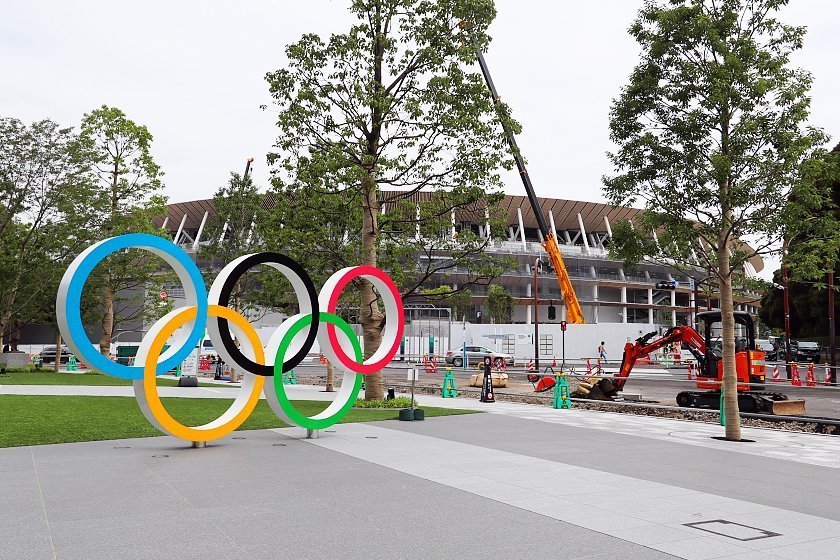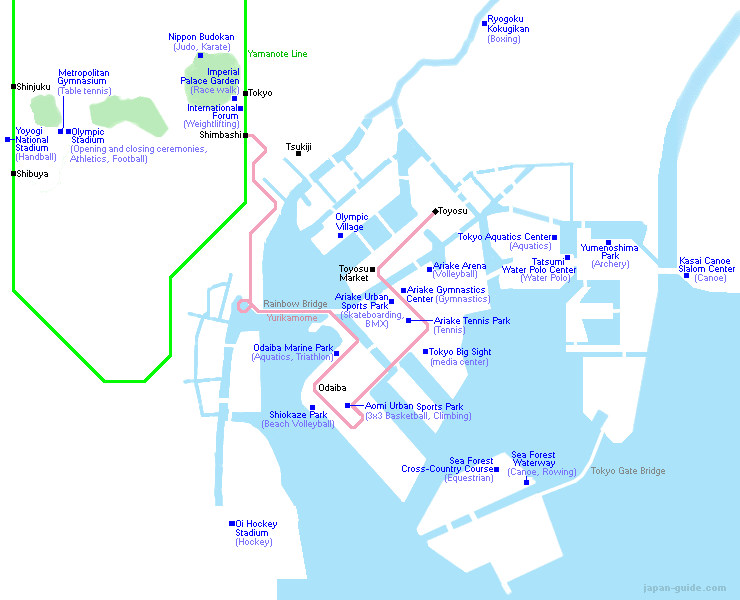Tokyo 2020 Summer Games Venues

The eagerly anticipated Tokyo 2020 Summer Games promise to be a spectacular affair, not just in terms of the sporting events themselves, but also through the inspiring venues that will host them. The games will take place predominantly in two areas of Tokyo, namely the Heritage Zone in the center of the city, and the Tokyo Bay Zone, on and around man-made islands in the bay. The Olympics will be held from July 24 to August 9, with the Paralympics following from August 25 to September 6.
Within the Heritage and Tokyo Bay zones stand a multitude of venues ready to host the games. While some of these venues have pre-existed, in some cases since the 1964 Tokyo Summer Games, there are also a string of new complexes built specifically to host next summer's games. With one year to go until Tokyo 2020, we went to take a look at some of the most important venues.

The jewel in the Tokyo 2020 crown is undoubtedly the Olympic Stadium which, with a capacity of 48,000, will act as the main venue for the games. Scheduled for completion in November 2019, the stadium's progress looks to be very much on track, at 90% complete with the last bits of work still being carried out for passers-by to see.
The building itself is easy on the eyes, with a wooden-beamed facade and integrated greenery giving the stadium a clean, modern feel. Set to host the Athletics and Football, as well as the opening and closing ceremonies, this will be a venue that impresses many thousands.




Near to the Olympic Stadium stands the Tokyo Metropolitan Gymnasium, which, being originally constructed in 1953, served the summer games in 1964, and will host table tennis next summer. The complex is currently undergoing renovations and is inaccessible to the public. Other venues that are being reused from the 1964 Tokyo Summer Games include the Nippon Budokan (which will host karate and judo in 2020) and the Yoyogi National Gymnasium (which will host handball).



A large number of venues, the media center and the Olympic Village will be located in the Bay area, but transportation infrastructure in these areas has been inadequate. To improve, new bridges were recently completed between Tsukiji, Harumi and Toyosu that are essential for accommodating traffic between the venues and the Olympic Village. They also provide new interesting views of the waterfront.




The Olympic Village is currently in the latter end of construction on the island of Harumi. The large complex will host athletes during the summer games, and thereafter will be converted into a residential condominium complex.




South of Harumi lies the Ariake district, which in turn is the home of Tokyo Big Sight, a large convention center that will serve as the games' broadcast and press center. The district also boasts many event spaces to be used in next summer's games, including the impressive Ariake Arena which will host volleyball next summer. With a scheduled completion date of December 2019, the complex is around 85% complete at the moment.


The Ariake Gymnastics Center is another of Ariake's eye-catching complexes that, interestingly, is only being constructed as a semi-permanent venue. There remains a little ways to go before completion, and there are no prizes for guessing what kind of events it will host in the 2020 Summer Games. Nearby, the Ariake Urban Sports Park will host the BMX events as well as skateboarding. Seemingly only part way completed, the park promises to make for an exciting event space.




Adjacent to Ariake is the Tatsumi district, which is home to the under-construction Tokyo Aquatics Center. This large arena, which is set to be completed next February, is around 75% complete, and is currently a little difficult for pedestrians to get close to.

The Tokyo Gate Bridge stretches two and half kilometers across Tokyo Bay, and walking along it offers a great vantage point from which to view the newly completed Sea Forest Waterway, where canoeing and rowing events will be held next summer.






